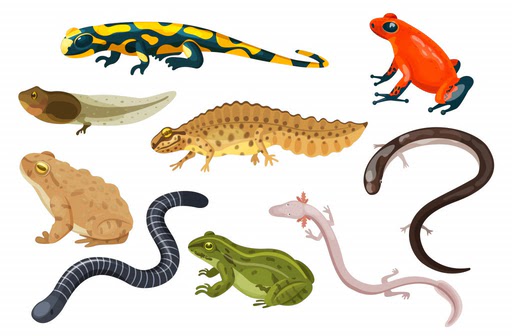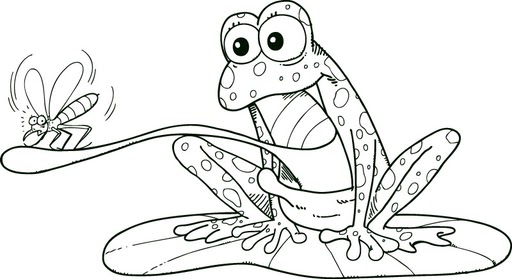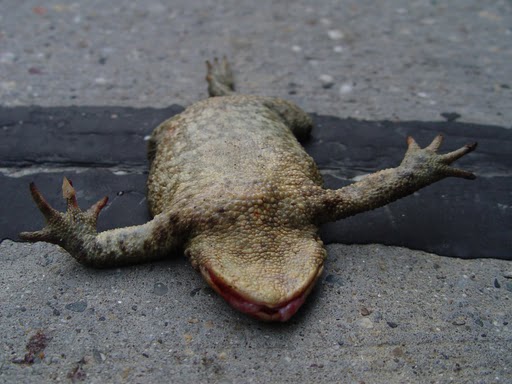Some estimates suggest that frogs are particularly vulnerable to extinction and their population is declining at a faster rate compared to other vulnerable species. The decrease in their numbers can be attributed to various factors, such as habitat loss and the animal trade.
Extinction refers to the complete disappearance of a species, while mass extinction refers to the extinction of numerous species on a large scale, resulting in the breakdown of entire ecosystems. The last mass extinction on Earth led to the end of the dinosaurs’ reign!
However, not all species are experiencing the same rate of decline. Some species are more susceptible to extinction than others.
In the 1950s, scientists noticed a peculiar trend. Amphibians, including frogs, were facing extinction at an alarming rate. In 1989, during the world’s first herpetology conference, scientists labeled this phenomenon as the “amphibian extinction crisis.” They established a task force to investigate the reasons behind the rapid decline of amphibians.
 Amphibians are a group of animals that include frogs, salamanders, and caecilians (snake-like amphibians) (Photo Credit: KittyVector/Shutterstock)
Amphibians are a group of animals that include frogs, salamanders, and caecilians (snake-like amphibians) (Photo Credit: KittyVector/Shutterstock)
Frogs: More Significant Than You Might Think
Many people do not hold a favorable opinion of frogs. They are slimy, small, and tend to jump around. However, as an ecologist, I find them fascinating. They possess immense diversity and display vibrant colors and unique patterns! But why should frogs matter to those who may not have a strong interest in wildlife?
Have you ever been annoyed by mosquitoes? Or perhaps had numerous flies bothering you while you eat? In such cases, frogs can be your allies. Frogs are natural pest controllers. They belong to a group of species that help regulate pests. Frogs control pests by consuming them, often utilizing their extendable tongues!
 Amphibians play a crucial role in controlling various insect populations (Photo Credit: Moriz/Shutterstock)
Amphibians play a crucial role in controlling various insect populations (Photo Credit: Moriz/Shutterstock)
Frogs contribute to pest control, benefiting humans in two ways. Firstly, they help control populations of mosquitoes and flies at a personal level. Their presence provides relief from these bothersome pests. On a larger scale, they also help reduce the spread of diseases. Frogs prey on various types of insects, not just mosquitoes and flies. Their assistance in pest control is advantageous for both ordinary individuals and farmers. When frogs control pests on farms, less of the crops are consumed by pests.
Frogs in Ecosystems
Frogs also serve as important mesopredators. What exactly does this mean? If you consider a food chain, you typically have producers (plants), primary consumers (grasshoppers), and apex predators (eagles). Eagles do not eat grasshoppers, but the animals that do eat grasshoppers—the ones in the middle—are mesopredators.
Mesopredators play a crucial role in ecosystems by serving as a vital link in the food chain. In an ecosystem, a frog would consume the grasshoppers, and then the frog would be eaten by a snake. Finally, the snake would be a food source for an eagle. Without mesopredators, there would be no organisms preying on grasshoppers, resulting in the death of eagles, an overabundance of grasshoppers, and the collapse of the ecosystem.
Reasons for the Decline of Amphibians
Scientists have identified six main causes for the decline of amphibians, with three of these factors well-understood and the other three still requiring further research.
Habitat Destruction
Amphibians rely on specific habitats, and any changes to these habitats can significantly impact their well-being. Additionally, frogs migrate between different habitats depending on the season, using grasslands or forests for feeding in the summer and moving towards ponds during the rainy season for breeding.
If these habitats or the connecting areas are damaged, it can result in a high number of deaths among amphibians. For example, the construction of highways can separate the habitats that frogs migrate between, leading to an increased risk of roadkill.

Building highways separates the habitats that frogs migrate between, leading to a lot of roadkill. (Photo Credit : stuttershutter/Shutterstock)
Invasive Species
Invasive species are organisms from other ecosystems that can cause significant harm to native species. When invasive species are introduced to an ecosystem where they had no previous presence, they can cause the extinction of many species, similar to placing an African lion on a small island of sheep.
Many invasive species have entered ecosystems worldwide, often by accident but sometimes intentionally. Unfortunately, this has resulted in the destruction of many species, particularly affecting vulnerable amphibians.
Animal Trade
The international animal trade is another well-understood reason for the decline of amphibians. Many animals are traded for food, either bred on farms or hunted in the wild. Amphibians, especially salamanders, have been heavily exploited and overhunted, leading to the extinction or endangerment of numerous species.
Conclusion
While there is still much to learn about the factors contributing to the extinction of amphibians, infectious diseases, climate change, and pesticides are three additional reasons that require further understanding. Fungal infections, in particular, have been identified as a significant threat to amphibians, capable of wiping out entire populations. It is crucial to comprehend the effects and causes of these diseases, along with addressing climate change and pesticide use, in order to prevent the collapse of ecosystems without amphibians. Currently, 41% of amphibian species are at risk of extinction, emphasizing the urgent need to protect and preserve these diverse forms of life for the survival of our planet.
